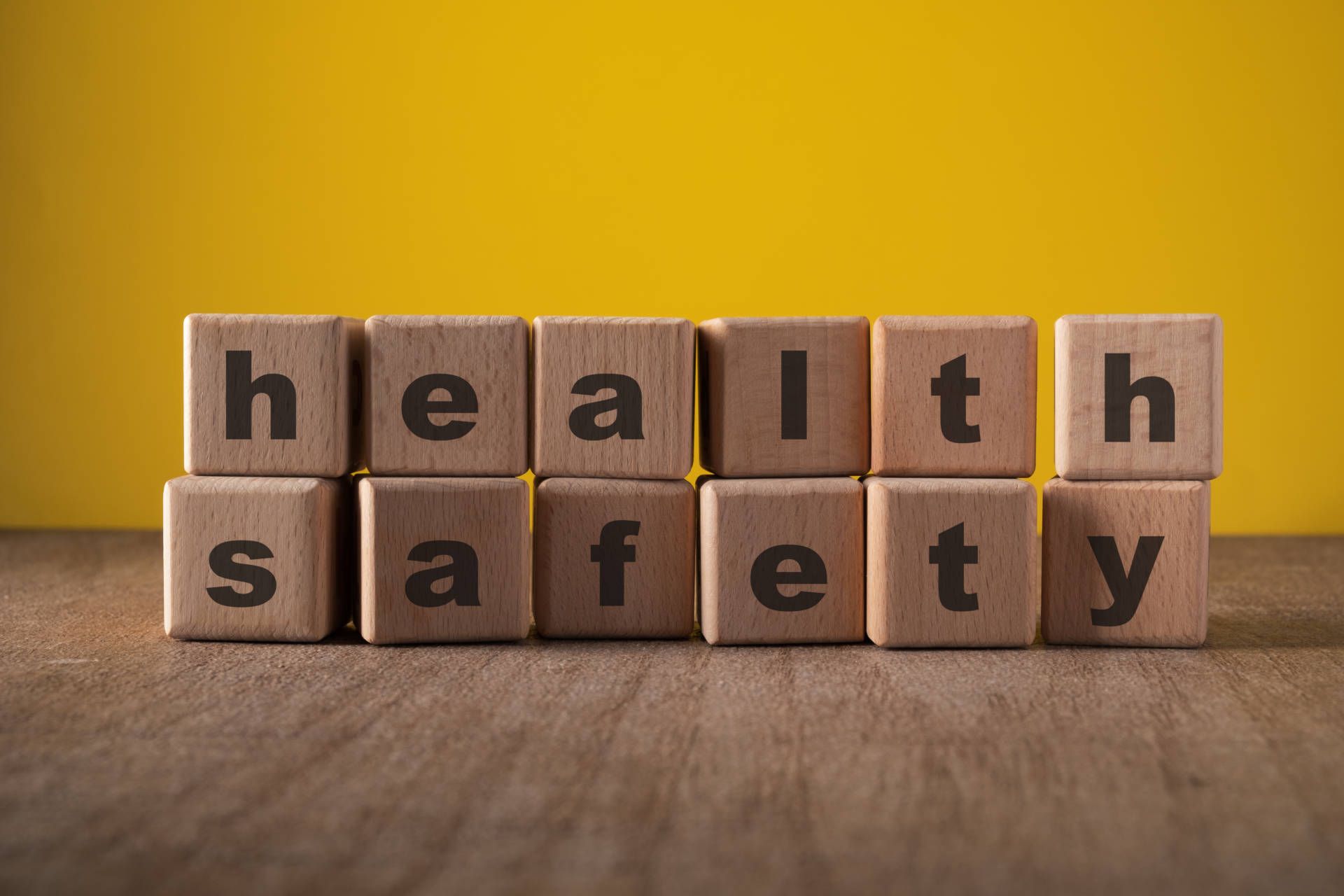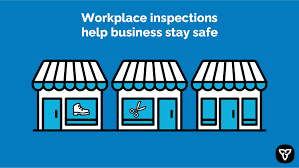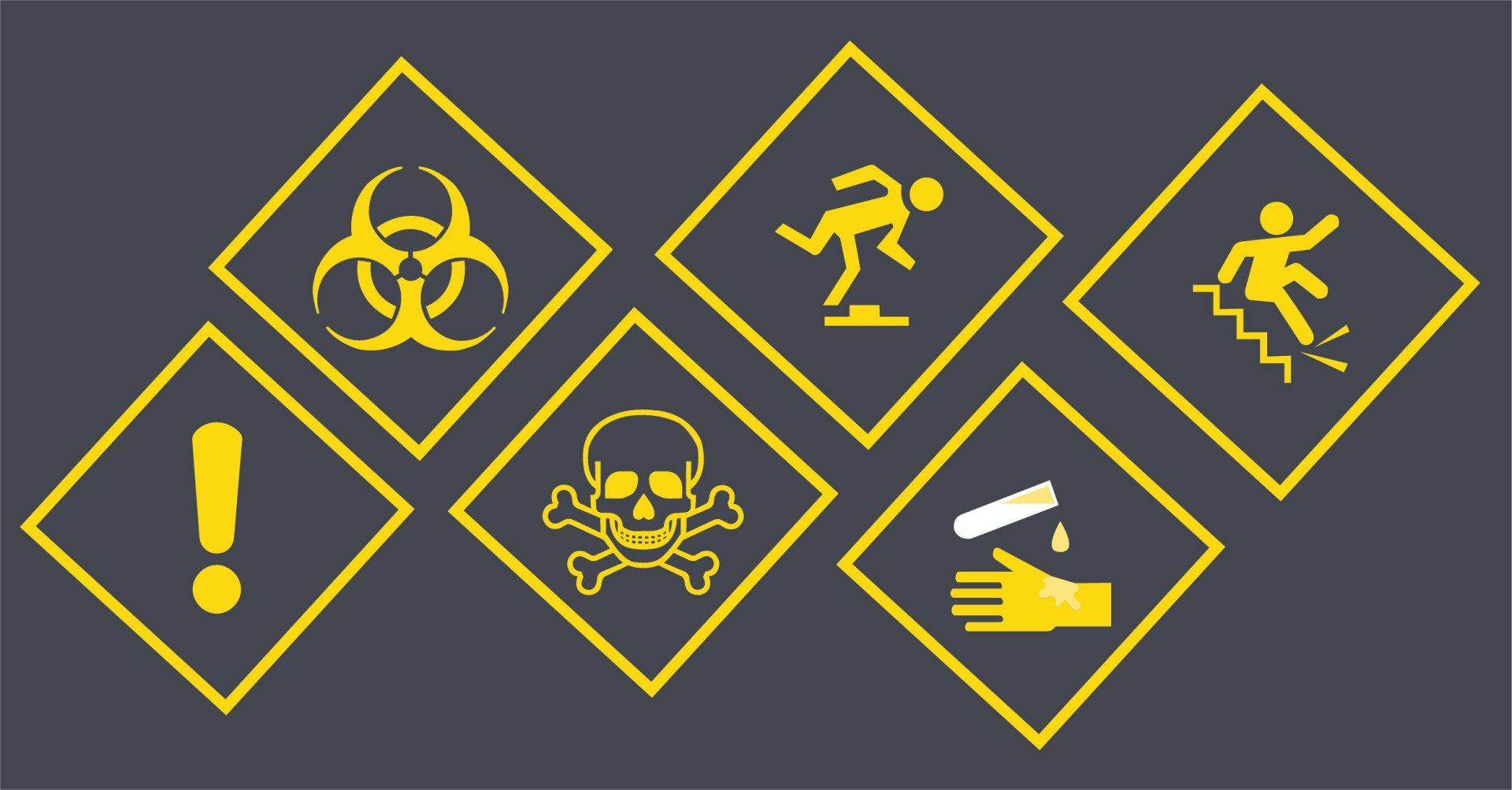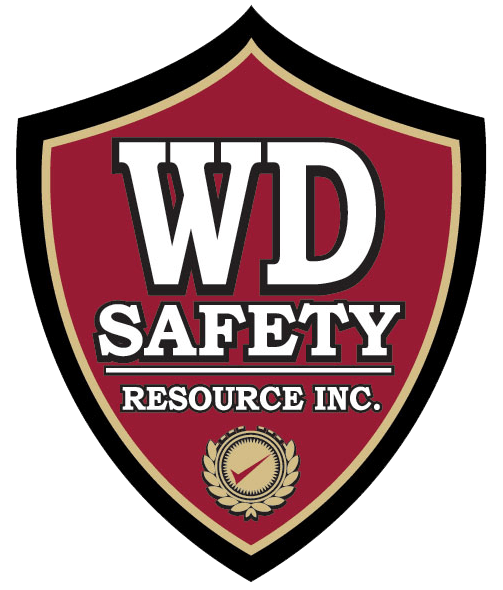Testimonials
The WD Safety Resource Inc.
team has helped our company by making the development and implementation of a Health & Safety program manageable for our business. As the Operations Manager I am responsible for the Health & Safety in our manufacturing company and have found WD Safety
to be dependable and resourceful. They are passionate and professional, and are able to tailor content to meet our requirements.
Julie Mara, Operations Manager, Entryguard Doors Inc.
News & Updates

Published by Vanessa Balintec of CBC News - April 20, 2022 A new survey suggests almost 20 per cent of Canadian businesses do not offer safety and orientation programs that are legally required for new workers in much of the country — a finding one labour law expert calls "shocking" and evidence of "widespread lawbreaking." The research, conducted by Angus Reid and commissioned by Threads of Life, a group that advocates for workplace safety, reflects a reality Cynthia Kathleen "C.K." DesGrosseilliers knows all too well. Her brother Tim was killed by falling equipment while on the job in downtown Toronto five years ago. She's been fighting to raise awareness about workplace safety ever since. "Tim would say that we need employers and supervisors that make safety priority one," the Toronto resident told CBC News. DesGrosseilliers says she can point to three major factors that led to his death: he was assigned the job at the last minute, he wasn't given a spotter while working and he didn't have up-to-date training. Her brother's death is one of more than 3,800 that occurred in Canadian workplaces from 2017 to 2020, according to the Association of Workers' Compensation Boards of Canada. DesGrosseilliers, who's a member of Threads of Life, says the results show many employers still need to be held accountable so new workers don't meet her brother's fate. "I think he would think of his nephews and nieces and he would think they deserved all the support that they can be given," said DesGrosseilliers. "It really is the most important thing for people to come home at the end of the day." 545 companies surveyed The survey was conducted from March 23 to 25 with hiring managers at 545 companies who are members of the Angus Reid Forum. The poll has a comparable margin of error of plus or minus 4.2 percentage points, 19 times out of 20. A total of 102 of those managers said their companies offer no orientation, onboarding, safety, emergency, hazard or illness and injury protocol training. Companies that have 29 employees and under make up 52 per cent of the firms that had none of these programs in place. Shirley Hickman, the executive director of Threads of Life, says her group wanted to understand how businesses are approaching workers' safety and hiring after two years of the COVID-19 pandemic. "Young workers didn't have jobs because of the pandemic. And then coming out of the pandemic, was that going to lead to more employers hiring more than normal?" said Hickman, whose son died at 20 years old in a 1996 workplace explosion in London. "And that proved to be true," she says. The survey suggests 27 per cent of companies in high-risk sectors, such as agriculture and resources, construction, energy, manufacturing and transportation, plan to hire more young workers than in the previous two years. Hickman says despite the growing awareness of occupational health and safety over the past few years, she's worried about young people going back to dangerous workplaces like construction sites and farms as pandemic restrictions ease. She hopes they'll learn about their rights and demand safe working conditions. "There's work to be done until there's no injuries, no illnesses, no deaths," she says. Eric Tucker, a labour law expert and professor at York University's Osgoode Hall Law School in Toronto, says each province has different regulations, but health and safety legislation generally imposes a duty on employers to provide instruction and training to workers. In Ontario, the home of almost 40 per cent of the businesses Angus Reid surveyed, those responsibilities are outlined in the Occupational Health and Safety Act. For companies to admit openly that they don't offer training that's mandated by legislation shows there is "widespread lawbreaking" taking place — partly due to weak enforcement by the province, Tucker says. "Every employer is required to have a safety program of one sort or another, so the admitted absence of those programs is really a shocking finding." A spokesperson for the Ontario Ministry of Labour told CBC News the province is "proud to support Threads of Life" in its effort to make workplaces safer. "Ontario has one of the best safety records in Canada. Our preventative, proactive approach emphasizes safety first, preventing or correcting workplace hazards to protect workers," Ciara Nardelli wrote in an email statement. "Our focus is on improving health and safety awareness and practices in small businesses and ultimately helping to lower number of workplace injuries, fatalities and illnesses." A 2019 report by the Auditor General of Ontario put forward 27 recommendations for the Ministry of Labour to strengthen enforcement of workplace safety. The office's follow-up report in 2021 said 11 per cent of the recommendations have been implemented, 52 per cent are in the works, and 33 per cent have shown little to no progress. Tucker says until the legislation catches up with the reality of the province's workplaces, businesses won't have any incentive to create safe environments. "The lack of good health and safety does not drive companies out of business."

Ontario Newsroom - News Release September 27, 2021 TORONTO – The Ontario government is continuing to protect workers and people from COVID-19 by providing businesses with new tools and educational resources, including a new safety plan builder and additional inspectors. More than 100 new health and safety inspectors are graduating today and will be visiting workplaces in construction, industrial and health care settings. With the support of provincial offences officers, the inspectors will be deployed to help educate workers and businesses about the newly-launched vaccine certificate. “As we fight the fourth wave of COVID-19, we need all hands on deck,” said Monte McNaughton, Minister of Labour, Training and Skills Development. “With 100 more inspectors, these boots on the ground across our province will help keep workers safe and support businesses to remain open. Our government’s inspectors will be patient, lead with education, and be reasonable to business owners and frontline workers implementing the vaccine certificate.” The addition of these graduates means Ontario now has a total of 507 labour inspectors , the largest ever number in provincial history. Over the coming weeks, in consultation with local public health units, Ministry of Labour, Training and Skills Development inspectors and other provincial offences officers will continue conducting inspection and education campaigns to ensure businesses are following COVID-19 safety requirements. To help businesses stay on top of health and safety guidance, the province has also launched the new Workplace Safety Plan Builder , a free interactive tool making it easier for workplaces to create and update their COVID-19 safety plans. The tool was developed specifically to support small businesses and was designed with their input. The safety plan builder will lead employers through an easy process to create and update an online safety plan that is right for their workplace. It also allows for easy customization and employers who sign up for updates will be notified when information is changed, allowing them to stay up to date with current guidance and requirements. “Running a small business during COVID-19 is a challenge unlike any other,” continued Minister McNaughton. “Our safety plan builder is here to help our local merchants and shopkeepers create and adjust their plans with the click of a button, having confidence they’re following the latest health and safety measures for their employees and customers.” Having a written safety plan is mandatory for businesses permitted to be open under the Reopening Ontario Act. Since March 2020, provincial inspectors have conducted more than 65,000 COVID-related workplace inspections, issuing 79,200 orders and stopping unsafe work 102 times. Data from the most recent visits, conducted over the summer, shows the education assistance provided by inspectors helped double the number of businesses who were fully compliant with their responsibilities under the Reopening Ontario Act.

Published by the Canadian Centre for Occupational Health and Safety July 12, 2021 Maintaining and promoting health and safety in the workplace is important throughout the employee journey. Whether they’re a new worker or a seasoned professional, training (and retraining) is a key factor that can help staff stay safe while on the job. In addition to providing training, employers must abide by a number of occupational health and safety responsibilities. Many of these elements, worker rights and employer responsibilities are similar across jurisdictions in Canada. However, the specifics around occupational health and safety legislation and how these laws are enforced can vary from one jurisdiction to another. Although rules and regulations vary, these three rights apply to all workers in Canada: The right to know about health and safety matters. The right to participate in decisions that could affect their health and safety. The right to refuse work that could affect their health and safety, and that of others. Workers also have health and safety responsibilities. They must work in compliance with occupational health and safety legislation, and use personal protective equipment and clothing as directed by the employer. Employees also have a duty to work in a safe manner, use the prescribed safety equipment, and report workplace hazards and dangers to their supervisor or employer. To carry out their responsibilities, workers need to know what these are, and that’s where managers, supervisors and employers come in. Managers and supervisors act on behalf of their employer. Therefore, they’re required by law to take every reasonable precaution to protect their workers, and they must ensure that workers are performing their jobs safely and are following occupational health and safety legislation. This means that workers need to be trained on potential and actual hazards associated with their job, provided with written instructions on the measures and procedures taken to protect them, and use all appropriate personal protective equipment and devices. Here are some ways you can implement health and safety measures at work: Implement and Communicate a Policy A health and safety program is a requirement in any workplace, and having a written policy is key to its success. Think of a policy as a plan of action. It indicates the degree of the employer’s commitment to health and safety and should reflect the special needs of your workplace. The policy should also be explained and understood by any and every worker and provided in written form in the language of staff. It should be positive in tone (for example, focus on what the worker should do rather than what they should not), and periodically reviewed to evaluate its effectiveness. The policy should be signed by leadership, and include items and statements such as the employer’s duty to give health and safety education and training to all employees, the development and maintenance of health and safety roles and procedures, and planned programs that support the commitment to workers’ health. It should make clear that co-operation on the part of all employees is vital to the success of the health and safety policy and should be actively incorporated into the workplace and regular workplace duties and actions. To start, it’s important to make sure all employees are aware of it and understand the policy. Workplaces can achieve this by incorporating it as part of employees’ job descriptions, and then reinforcing the commitment to health and safety by holding regular safety talks, posting signs at the workplace, by writing articles about the policy in company newsletters, posting on the internal website, and sending emails. Create a Committee Most workplaces are legally required to have a health and safety committee or representative. Among other things, the role of a health and safety committee or representative is to recognize and evaluate workplace hazards and participate in the development and implementation of programs to protect the employees’ safety and health. They will respond to employee concerns and suggestions about safety and health and can create and promote programs to improve employee training and education. Consult the most up-to-date applicable legislation in your province or territory to find out the requirements for your workplace. Implement Control Measures To help identify hazards in your workplace, perform risk assessments of specific job tasks. During this process it is important to consult with the health and safety committee or representative, workers that perform the tasks being evaluated, and supervisors. Once the hazards and risks have been identified, determine the appropriate control measures to protect workers. When selecting control measures, consider the hierarchy of controls, which includes elimination/substitution controls, engineering controls, administrative controls, and personal protective equipment. Risk assessments will also help identify the specific training needs of your workers. Provide Ongoing Training The process of training workers can help keep everyone safe on the jobsite. While training is incredibly important for new staff, keep in mind that workers who are returning after an absence or are taking on new roles or responsibilities need to go through this process, too. When training, be sure to cover topics like worker rights and responsibilities, your organization’s specific safety rules and policies, and who to ask for help. Tour each work area in the facility to review potential hazards and safe work practices. Don’t forget to also review emergency and evacuation procedures and the locations of first aid kits, fire extinguishers, emergency exits, and fire alarm pull boxes. Have all employees complete an emergency notification form which can be submitted to human resources or their supervisor. Provide staff with a contact list of the health and safety committee members or representatives. They should also know how to participate in the health and safety process, like how to report hazards. Depending on the nature of work and the potential hazards (for example: working at heights, confined spaces, mobile equipment), specific training may be required. Consult the applicable legislation in your province or territory to ensure your workers are provided with the necessary training. What about WHMIS? If you mention health and safety, you might think of WHMIS, which stands for Workplace Hazardous Materials Information System. WHMIS is a comprehensive system that provides health and safety information on hazardous products that are intended for use, handling, or storage in Canadian workplaces. The main components of WHMIS include hazard identification and product classification, labelling, safety data sheets, and worker education and training. Not sure if you need to include WHMIS in your staff training? You do if you have hazardous products in your workplace. All Canadian jurisdictions require that employers develop, implement, and maintain a worker WHMIS education and training program. Include Mental Health as Part of Safety and Health Although workplaces have traditionally looked at workplace health from a strictly occupational health and safety perspective, mental health should be integrated in your occupational health and safety policy. Research has shown that employees who feel they have psychological support have greater job attachment, satisfaction, involvement, and performance, and more positive work moods. To help keep your employees psychologically safe, make mental health a priority. Promote work-life balance and encourage staff to take their earned breaks. Show compassion and understand that priorities come up outside of work. Check in with employees. Even a simple “How are you?” can go a long way. Worker Safety is a Two-Way Street Worker safety isn’t just one tip, tool, or training process. It’s a journey. And just like any journey, there are many different routes you can take. But no matter which way you go, don’t go it alone. By involving your staff and clearly communicating the path forward, you’ll get there together, safe and sound.


